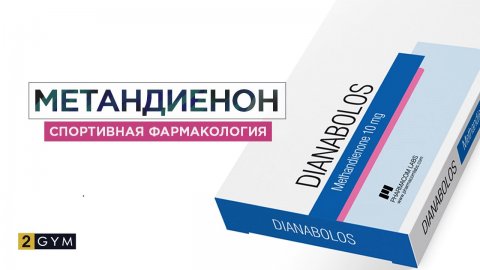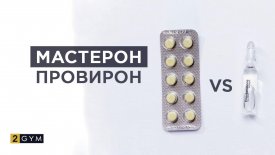Intermittent AAS Usage Scheme
Intermittent schemes are used not only for androgenic anabolic steroids. But we will only focus on AAS, so let's concentrate our attention on them.
How and where did the idea of the intermittent scheme come from? From an observation made back in the early 1990s.
That is, almost 30 years ago. It was found that the intake of such a highly adverse anabolic steroid for the HPTA axis as methandrostenolone, used at a dosage of 100 (!) mg per day for six consecutive weeks, did not affect the levels of luteinizing and follicle-stimulating hormones at all.
However, one condition was strictly observed: the entire daily dose of "methane" was taken at once – just once a day.
A little later, the same observation was recorded for oxandrolone. Contrary to popular belief, this anabolic steroid significantly disrupts the functioning of the HPTA axis, but only if taken several times a day.
If the entire daily dose of oxandrolone was taken at once, no disruptions in LH and FSH levels were recorded again. Thus, the idea of intermittent schemes was born.
Constructing Intermittent Schemes
The most common variant of the intermittent scheme is taking the entire daily dose of AAS at once, once a day. However, an important condition must be met: the half-life of the drug should not exceed 6-8 hours. 10 hours is the maximum half-life duration.
Obviously, this condition does not apply to every oral androgenic anabolic steroid. For example, the estimated half-life of oxymetholone is longer.
As for injectable drugs, only testosterone suspension or testosterone no ester (TNE) can be used in intermittent schemes. But – even twice a day, as the half-life of the suspension and TNE does not exceed 100 minutes.
Regarding another popular suspension – injectable stanozolol, it is more complicated because the half-life of this drug is not strictly defined and can reach up to 24 hours (although in rare cases).
But for "Winstrol Depot," there is another intermittent scheme. This scheme involves using the drugs not daily, but every other day.
In this case, AAS with a half-life not exceeding 20 hours can be used, which means that even the acetate ester fits this scheme with some allowances.
However, it is worth noting that, in terms of impact on the endocrine system, this scheme can be considered more "harsh," so if you prefer guaranteed safety, it is better to choose the first of the two proposed schemes.
Advantages and Disadvantages of Intermittent Schemes
The advantage of intermittent schemes is obvious: they cause minimal harm to the endocrine system and do not require recovery after their completion.
In fact, this advantage may outweigh all the existing disadvantages for most people who are just planning to start using "pharma."
Which are no less obvious: first, significant achievements cannot be attained with intermittent schemes, although it is better than nothing.
Second, usually, in such schemes, a large amount of hepatotoxic agent is taken at once. And not just hepatotoxic, but often highly irritating to the gastrointestinal tract.
The first disadvantage, from a practical point of view, means that the use of AAS is tied to the training process: for optimal results, the entire dose of the drug should be taken about 1-2 hours before the start of the workout.
Accordingly, the training process should be planned, strictly alternating working days with rest days from training.
The second implies the use of hepatoprotectors – preferably throughout the entire scheme or at least in the second half.
Also read 20 Dietary Supplements for Liver Recovery
The duration of the intermittent scheme (unless the only drug used is testosterone suspension or acetate – for example, trenbolone) should not exceed 6 weeks.
Dealing with gastrointestinal tract irritation is more difficult – even if the chosen anabolic steroid is taken with food. So, most likely, you will have to endure this inconvenience for some time.































Log in with ( Sign Up ? )
or post as a guest
Be the first to comment.